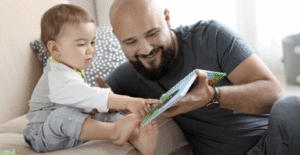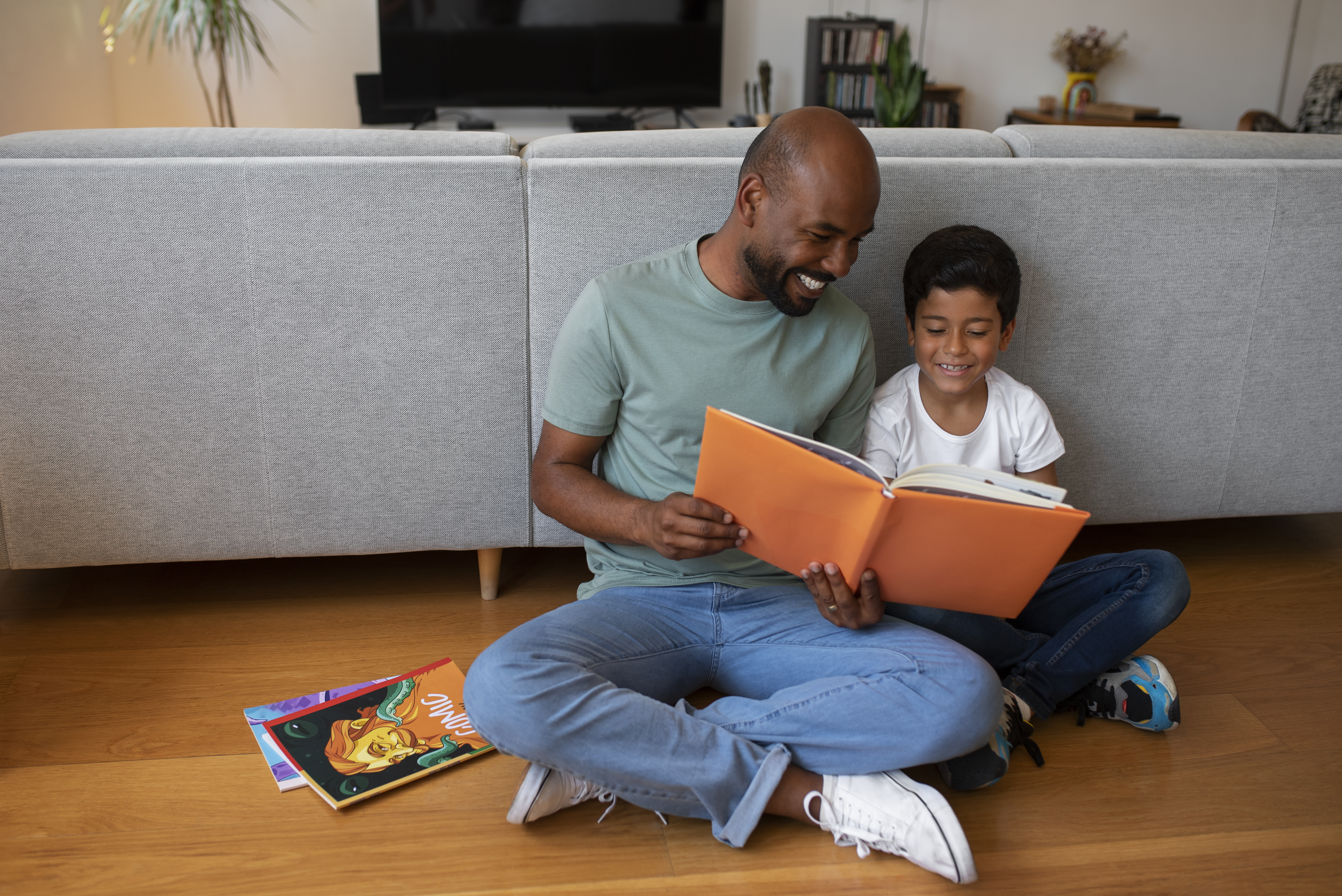Your involvement in your child’s therapy is key! You can help your child expand their communication in a comfortable and familiar environment at home. Speech therapists only see their clients 1-2 times a week, but they can guide you on how to practice skills at home.
Simple Activities to Try at Home

1. Singing Songs
– Making songs part of your regular routine
– Take regular anticipated pauses in songs and wait playfully for your child to fill in the word or gesture. Example: “the people on the bus go up and … [pause]… down!”
– The repetitive and predicable nature of songs can elicit first words
2. Comment in play / routines:
– Comment on what your child is doing and what you are doing/giving to them. Say the words that your child would if they could.
– Example: your child is pushing a car; you can say “push!”, “go!”, “it’s driving!”
– Example: you give your child their spoon for lunch; you can say “spoon”, “let’s eat”.
– Example: you’re washing your child’s hands; you can say “wash!” or “Mommy’s washing!”, “dirty”
3. Comment in books:
– Comment on the pictures and point. Guide the child to explore the page as you highlight words/concepts.
– Use your child’s level of sentences (1 word or 2-3 word sentences).
– The best books have pictures with clear vocabulary and actions shown.
4. Expand
– Your child says “yellow bus”; you can say – “Yes, that’s a big yellow school bus! The yellow bus is driving.”
– This shows your child how to expand on their vocabulary through adjectives describing the object itself and the action that the object is doing.

5. Pausing
– After you comment or expand, pause to see what your child will say next so that we are letting the child initiate an idea.
– Your child may say nothing, then you can comment, or they can communicate a message and you can expand.
Recap
These five strategies are easily transferrable to different settings outside of therapy and provide constant exposure to language! Opportunities to build speech are all around us, recognizing how to incorporate them at home in a fun and organic way is the tricky part!
If you have concerns about your child’s language development, contact us today for more information or to book an appointment!
References:
Wedoff, K. (2020). Parallel and Self-Talk. Speech-Language-Hearing Clinic. https://www.chhs.niu.edu/clinics/_pdf/slp-parallel-self-talk.pdf

